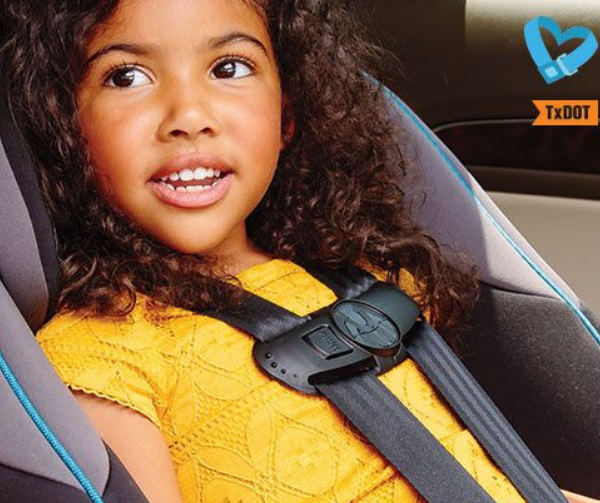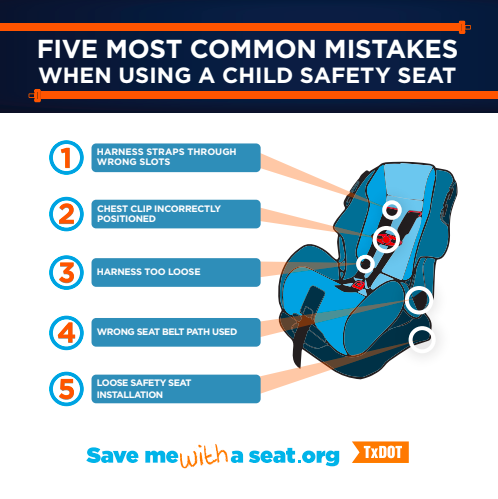Get a FREE Safety Seat Check | September 23–29 National Child Passenger Safety Week TxDOT
Child Passenger Safety Week is September 23-29th and I think we can all agree that there is nothing more important than the safety of our little ones. Child safety seats are such an important thing to get right, yet so many of us are getting it wrong. There are straps galore, latches, tethers. Then there is the chest strap, and the list goes on. Point is, it’s super easy to make a mistake and it only takes that one time for it to be a fatal mistake.
The best way to keep young children safe in your vehicle is to make sure they’re properly buckled up in a child safety seat that is the right fit for their age and size.
- Vehicle crashes are a leading cause of death for children.
- Unfortunately, 2 out of 3 child safety seats are misused, putting children at unnecessary risk in the event of a crash, according to the National Highway Traffic Safety Administration.
Not sure if your child’s safety seat is installed correctly? Get a FREE safety seat check. The Texas Department of Transportation (TxDOT) offers free safety seat check-ups at each of its 25 district offices across the state.
- TxDOT’s free safety check-ups are available year-round and usually take 20 to 30 minutes. A safety specialist will take the time to show you step by step how to use your child’s safety seat correctly.
- Visit SaveMeWithaSeat.org to find the nearest TxDOT office where you can schedule a safety seat check-up.
September 23–29 is national Child Passenger Safety Week. TxDOT is coordinating extra efforts now to increase the proper use of child safety seats—and to decrease the number of child deaths and injuries on Texas roads.
It’s the law.
- Texas law requires all children under 8 years old to be in a safety seat whenever they ride in a vehicle, unless they’re taller than 4 feet 9 inches.
Visit SaveMeWithaSeat.org to find tips on selecting the right safety seat for your child and correctly using it.
- Infants and toddlers should ride in a rear-facing safety seat until they reach the highest weight or height allowed by their safety seat’s manufacturer.
- School-age children are safest riding in a forward-facing safety seat or booster seat until the vehicle’s seat belt fits them properly, usually when they are taller than 4 feet 9 inches and between 8 and 12 years old.
- Kids under age 13 are safest riding in the back seat, properly secured in a seat belt or safety seat.













